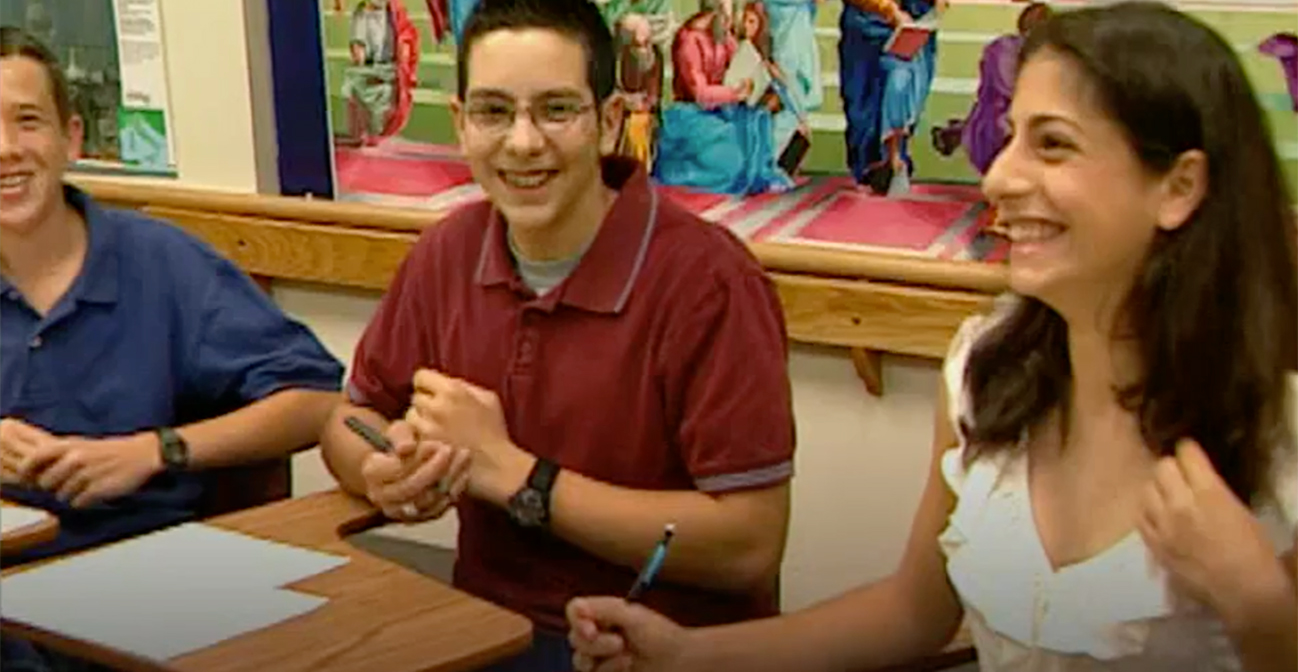Join us for conversations that inspire, recognize, and encourage innovation and best practices in the education profession.
Available on Apple Podcasts, Spotify, Google Podcasts, and more.

CLASSROOM AT A GLANCE
Teacher
Marylee DiGennaro
Language
Italian II
Grades
9
School
North Haven High School, North Haven, Connecticut
Lesson Date
October 9
Class Size
11
Schedule
Block schedule, 82 minutes every other day
In this lesson, students practice vocabulary relating to homes, furnishings, and directions. First, they compare typical U.S. and Italian homes, using their own drawings and a PowerPoint presentation by Ms. DiGennaro. Next, they practice vocabulary words as they match labels to pictures of furniture, play a card game, and even dance! Students then use the vocabulary in two final activities: They follow classmates’ directions to place pictures of furniture on a floor plan on the board, and then work in pairs to draw a picture of a home described by their partner.
Communication: Interpersonal
Cultures: Practices, Products
Comparisons: Cultural
Communities: School and Community
negotiation of meaning
In this process, teachers and students try to convey information to one another and reach mutual comprehension through restating, clarifying, and confirming information. The teacher may help students get started or work through a stumbling block using linguistic and other approaches.
thematic units
Thematic units are designed using content as the organizing principle. Vocabulary, structures, and cultural information are included as they relate to the themes in each unit. For an excellent example of theme-based units, see the Nebraska Foreign Language Education Web site in General Resources.
Reflect on Your Practice
As you reflect on these questions, write down your responses or discuss them as a group.
Watch Other Videos
Watch other videos in the Teaching Foreign Languages K–12 library for more examples of teaching methodologies like those you’ve just seen. Note: All videos in this series are subtitled in English.
Put It Into Practice
Try these ideas in your classroom. Where it’s not already evident, reflect on how to adapt an idea that targets one performance range for application to other performance ranges.
World-Readiness Standards for Learning Languages
The World-Readiness Standards for Learning Languages create a roadmap to guide learners to develop competence to communicate effectively and interact with cultural understanding. This lesson correlates to the following Standards:
Interpersonal Communication
Relating Cultural Practices to Perspectives
Relating Cultural Products to Perspectives
Cultural Comparisons
School and Global Communities
Lesson Materials
Card Game Instructions (PDF, 13 K)
Instructions for the card game played by students to review furniture vocabulary
Email Rubric (PDF, 14 K)
Ms. DiGennaro’s rubric for grading student email correspondence with the Italian students (Includes English translation)
Curriculum References
Connecticut State Department of Education: World Languages
Marylee DiGennaro’s Additional Resources
Web Resources:
Casa.it
A real estate Web site that gives descriptions of houses and apartments for sale or rent (available in Italian only)
Google
The popular search engine can be used to find images of Italian furniture; click on the “Images” tab and enter the name of a piece of furniture or room in Italian to get images from Italian web sites